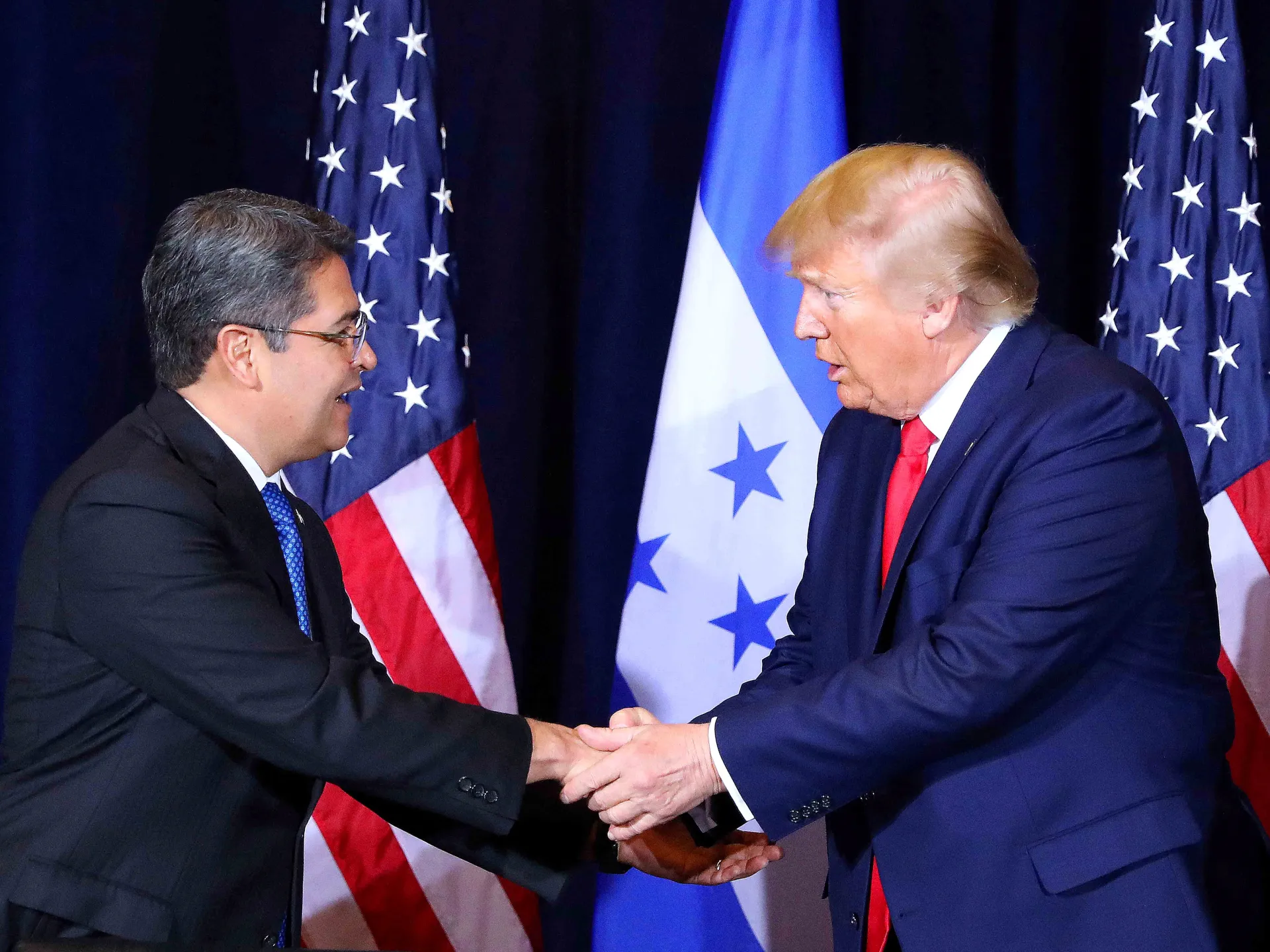Trump pardons former Honduran President Juan Orlando Hernández
1 of 2 | Former Honduran President Juan Orlando Hernández walks surrounded by police agents during his extradition process at the headquarters of the National Special Forces Directorate in Tegucigalpa, Honduras, 21 April 2022. This week, President Donald Trump gave him a pardon. File Photo by Gustovrk EPA/Gustavo Amador
Dec. 2 (UPI) — U.S. prison officials released former Honduran President Juan Orlando Hernández after U.S. President Donald Trump pardoned him, Hernández’s wife revealed Tuesday.
Trump announced his plans to pardon Juan Orlando Hernández in a Truth Social post Friday. A U.S. court convicted Hernández in 2024 of trafficking drugs to the United States and sentenced him to 45 years in prison and an $8 million fine.
Trump said Juan Orlando Hernández had been “treated very harshly and unfairly.”
Citing prison records, the BBC reported Hernández was released from the high-security USP Hazelton prison in West Virginia.
Ana García de Hernández, the former president’s wife, announced his release on social media Tuesday, thanking Trump for his freedom. Renato Stabile, Juan Orlando Hernández’s attorney, also offered his thanks.
“On behalf of President Hernández and his family, I would like to thank President Trump for correcting this injustice,” Stabile said, according to CNN.
“President Hernández is glad this ordeal is over and is looking forward to regaining his life after almost four years in prison.”
Both Democratic and Republican members of Congress denounced Trump’s plan to pardon Juan Orlando Hernández given his crackdown on drug trafficking linked to immigration.
White House press secretary Caroline Leavitt blamed Juan Orlando Hernández’s on the Biden administration.
“This was a clear Biden over-prosecution. He was the president of this country. He was in the opposition party,” she said. “He was opposed to the values of the previous ad.”
South Africans honor Nelson Mandela
Large crowds gather outside Nelson Mandela’s former home in the Johannesburg suburb of Houghton to pay their respects on December 7, 2013. Mandela, former South African president and a global icon of the anti-apartheid movement, died on December 5 at age 95 after complications from a recurring lung infection. Photo by Charlie Shoemaker/UPI | License Photo


